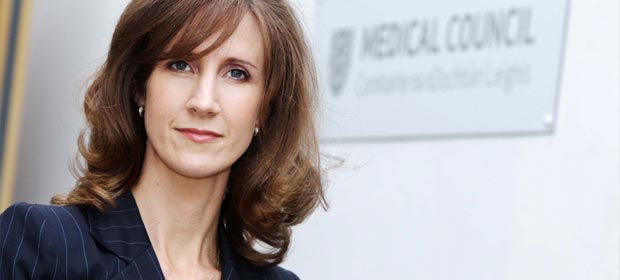A new report which provides a greater understanding of the practice of medicine in Ireland is of importance to senior health managers as it will enable planning to meet the evolving needs of Irish patients, writes Caroline Spillane, CEO of the Medical Council.
At a time of great change in the health system, some things remain constant: Doctors are highly trusted by the public and the relationship that a patient establishes with a doctor is at the core of their experience of healthcare. The planning and development of the health system must be based on a clear understanding of the practice of medicine. The Medical Council Workforce Intelligence Report was published six weeks ago by the Medical Council and for the first time provides a comprehensive description of medical practice in Ireland. It is important reading for doctors, health managers, the public and everyone involved in health care in Ireland.

The report highlights a growing trend towards specialisation. The figures from 2012 indicate that 44.3 per cent of doctors retaining registration were on the Specialist Division which represents an increase of over 25 per cent since 2007. However, deeper analysis of the data reveals that the growth across specialty areas is uneven. While areas like General Practice, Infectious Diseases, Neurology, Nephrology and Medical Oncology have all seen higher than average growth rates in recent years, areas such as Ophthalmology, Occupational Medicine and Psychiatry have seen lower growth.
The proportion of International Medical Graduates (IMGs) in the Irish workforce has stood at around 35 per cent for the past five years, one of the highest in the OECD.
Exit rates within the profession were also presented for the first time in the report. In 2012, 8.0 per cent of doctors exited from the register maintained by the Medical Council. The exit rate for doctors aged 25 to 64 years was 6.9 per cent. Higher exit rates were observed among doctors on the general and supervised division as well as among doctors who qualified in medicine outside Ireland. Although Irish qualified doctors had lower exit rates, among this group high exit rates were observed in the younger age group. Doctors aged 30 to 34 years had the highest exit rate at 9.4 per cent. The exit rate among Irish qualified doctors aged 25-29 years was 6.4 per cent. The report clearly documents the attrition of young Irish graduates from the health system.
The headline data in the report point to a strong and sustainable supply of doctors in Ireland. However, deeper analysis makes it evident that ongoing medical workforce planning and development is necessary.
Globalisation of medical practice in Ireland is a key theme emerging from this report. The proportion of International Medical Graduates (IMGs) in the Irish workforce has stood at around 35 per cent for the past five years, one of the highest in the OECD and well ahead of countries traditionally viewed as facing challenges with availability of domestically trained doctors, such as Canada and Australia. International medical graduates make a significant and valuable contribution to the Irish health system. This report highlights some features that differ in comparison to Irish graduates. The age and gender profile of international medical graduates differs, as does the skill-mix profile, with 54.1 per cent of Irish graduates versus 25.9 per cent of international medical graduates registered in the specialist division. A higher than average proportion of international medical graduates were observed in areas such as Anaesthesia, Emergency Medicine, General Medicine, General Surgery and Obstetrics and Gynaecology.
The Medical Council’s first Medical Workforce Intelligence Report is an important and valuable picture of medical practice in Ireland. The report is based on information provided by the medical profession and it will be of interest to every doctor and health manager working in Ireland. In the same way as the census holds up a mirror to the general population, this report contributes to a better understanding of the medical professional in Ireland today. Reflecting on yesterday and understanding today helps us all plan for tomorrow. Through this report, we look forward to continuing dialogue and collaboration with the medical profession, the public and the wider health system to ensure that all doctors are supported in good practice.
The Medical Council’s Medical Workforce Intelligence Report is available at www.medicalcouncil.ie

